Insurance Times investigates how the ongoing coronavirus pandemic is affecting motor supply chains and the subsequent claims process for motor insurers and customers
At first glance, motor insurers seem to be among the minority that are benefitting from the continued coronavirus pandemic.
The government-mandated lockdown regime, introduced to mitigate the spread of Covid-19, has vastly cut down traffic, meaning that motor claims have also dramatically dwindled.
Research published early last month by Trend Tracker, for example, showed that around 72% of bodyshops have seen claims notifications reduce by more than 70% since the partial lockdown started in March.
This has led to some motor insurers, such as Admiral, LV= and AXA Ireland, to award car, van and motorbike customers a refund on their insurance premiums, reflecting that vehicles are staying safely stowed on driveways rather than being a potential claim risk out on the roads.
However, not all the motor insurance sector is enjoying the same financial cost savings. Trend Tracker’s research also revealed that 49% of bodyshops have suspended trading since the partial lockdown was implemented, 65% have had to furlough staff members and 83% believe the coronavirus pandemic is a “disruptive” influence on the supply of original equipment manufacturer (OEM) parts.
Lockdown measures across the world are now having a very material impact on motor supply chains – not only is this affecting the claims process now, but motor insurers could see a very different claims landscape once the lockdown has lifted too. Richard Billyeald, chief technical officer at Thatcham Research, for example, said that it could take between 12 and 24 months for the industry to return to normal.
He added: “The impact of the pandemic on the supply chain is perhaps one of the most significant challenges for a swift return to business as usual for the automotive industry.”
A global industry
A fundamental issue for the motor supply chain sector is that it is a global industry – as the Covid-19 pandemic is also a global crisis, there is no financial respite or element of the sector that remains unscathed from the fallout.
Tom Helm, head of claims consulting at Willis Towers Watson, explained: “Production has stopped in different parts of the world – in certain parts of Asia, in Germany and in the US – so you haven’t got vehicles being built, you haven’t got the parts being manufactured either and then you haven’t got the ability to transport them in the way that they were being transported before; borders are closed, the free movement of goods has ceased.
”This is a really significant impact on the auto industry and the supply of parts.”
Billyeald agreed, adding that the different states of lockdown in different nations also poses a stumbling block to continuity of service.
“The length and global nature of the supply chain is one of the biggest problems,” he said. “Different measures are being implemented in a variety of ways in different countries, which has a marked impact on the transportation of goods in and out.”
Impact on claims
But how are claims being affected by this stripped-back supply chain?
Helm said that motor insurers may have to consider different approaches in order to plug the gap left by a struggling supply chain. This could include, for example, issuing temporary repairs, writing off more vehicles where parts are unavailable or too expensive, or settling claims on a cash-in-lieu basis. Insurers should also consider inconvenience payments, he added.
There is also additional costs that could be associated with credit hire, if a policyholder needs a replacement car for a longer period because their vehicle is unable to be repaired without the necessary parts.
Extra storage costs are a risk too as garages and bodyshops wait for longer periods to receive parts or take longer to repair vehicles due to social distancing measures.
Where parts are available, manufacturers could crank up prices to compensate overall financial losses. Helm explained: “You also have a situation where we’re at least going into a short-term recession, if not the risk of something longer – vehicle manufacturers have got to balance the books, they’ll probably be selling less vehicles and therefore that may put pressure on them having to put up the prices of parts.”
Furthermore, a “big pause button has been pressed on the claims process”, Helm continued, referring to open claims that are waiting for medical consultations to occur or updates on regular treatment, which is unable to take place due to social distancing advice. “They’re going to reach a standstill until such point as medical appointments can start taking place again. That’s going to change insurers’ reserving patterns,” he said.
The problem here is that insurers will not have the historical data to back up current decision-making regarding claims settlements and reserving as the Covid-19 pandemic has, so far, been an unprecedented event in terms of its impact.
“We haven’t really got anything to learn from as a previous example, but it is going to impact the pattern of how our claims are settling to how they’ve been in the past and that means that the claims teams and the reserving teams and the pricing teams really need to be communicating very reflectively together to really understand [outcomes],” Helm said.
“That’s really important because what those [teams] are doing is working out what’s the cost of the claims, what’s the prices I need to be charging, what’s the overall capital reserve I need to be holding for this business and typically they do that looking at past history.
“If they can’t do that, then they’re going to need to be using their expert judgement a lot more to think about what they need to be doing for pricing and claims management going over the next 10 to 12 months.”
Helm added that regular interaction between these teams is vital “so that people don’t make decisions in isolation”.
Post-coronavirus landscape
The motor supply chain has undoubtedly ground to an effective halt, specifically while the lockdown regime remains in situ, but the sector is also concerned about the domino effects that could plague the industry once the lockdown is lifted too.
Helm said: “As we come out of lockdown, it’s really going to expose [whether] we [have] got a significant problem – has it created a backlog where people need parts?
“It’s going to take time for [parts] to come through because the industry works very much on a ‘just in time’ basis and it’s dependent on some of those parts being available on demand, if you like, and fast transport. If they’re not being produced, they’re not being transported and therefore there’s going to come a point potentially where they’re not going to be available.”
Billyeald agreed: “Where carmakers are returning to production, they are doing so at a significantly reduced rate as a result of introducing strict health and safety measures which impede production efficiency. This will inevitably be the same situation for the suppliers when manufacturing components, so until the entire supply chain is up and running at the same speed, vehicle production will remain slow.”
This could also affect the equal consumption of parts, especially regarding Tier 1 suppliers that provide parts or systems directly to OEMs. Typically, Tier 1 suppliers work with a variety of car companies, but they’re often tightly coupled with one or two OEMs and then have more of an arms-length relationship with other OEMs.
Billyeald continued: “In many cases, Tier 1 suppliers produce individual components that are sold to multiple carmakers. However, with production of those components limited, if certain carmakers return to full scale production quickly and the Tier 1 supplier hasn’t, a relatively small group could consume all the Tier 1’s production. This could limit the availability of parts, potentially resulting in price increases.
“However, parts are usually procured under a contract based on three years of production, so suppliers and their customers should be protected by contracts.”
On the road again
There are also the claims implications of more vehicles once again being on the roads.
“We will see a different market emerge from the pandemic,” said Billyeald. “First there will be a rebound as drivers return to the roads, potentially in greater number than ever before as they eschew public transport. Claims will rally, over and above the norm, and with repair networks failing and under-capacity, demand could exceed supply, driving an increase in costs.”
Helm added that there is also likely to be an influx of inexperienced drivers hitting the roads, which could increase the risk of claims. This could include, for example, new drivers who had just taken their driving test before the lockdown was implemented, or drivers who were due to take their driving test over the lockdown period – these individuals may not have been able to practice their driving during the past few months.
Younger drivers could also be released from the lockdown regime before older drivers, noted Helm, however this demographic are unfortunately more likely to be involved in severe incidents that feature more passengers compared to older individuals, who tend to have more minor collisions with less passengers.
There’s also the impact of the government extending MOT renewals for six months in order to adhere to social distancing. Although this may help policyholders’ purse strings, it also means that there will be a raft of less well-maintained vehicles on the roads post-lockdown, which could be more prone to breaking down or causing incidents. This will naturally impact claim costs.
Mitigating risks
But what can motor insurers do differently, or learn from this experience?
Billyeald said: “Having been forced into potentially more efficient practices, such as remote working, there could be longer term benefits felt throughout the supply chain.
“Business continuity will also be a key focus, driven by a desire to future proof against subsequent lockdowns. This could see an increase in the holding of parts and, from a sustainable repair perspective, more insurers offering green parts within their policies.
“Insurers and brokers should continue to be flexible and creative in meeting the needs of their customers, by not sticking too rigidly to standard motor claims processes. For example, a key worker is likely to require ongoing mobility during the Covid-19 lockdown conditions. However, a vulnerable customer who is shielding may not need an immediate repair to their vehicle but would benefit from funded transport to and from regular hospital appointments.
“Flexing to the needs of the individual is key to reducing strain on supply chains, whilst meeting the needs of every customer.”
Hosted by comedian and actor Tom Allen, 34 Gold, 23 Silver and 22 Bronze awards were handed out across an amazing 34 categories recognising brilliance and innovation right across the breadth of UK general insurance.



























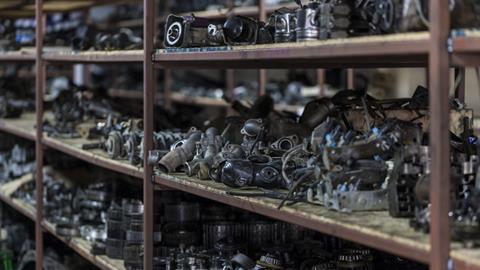
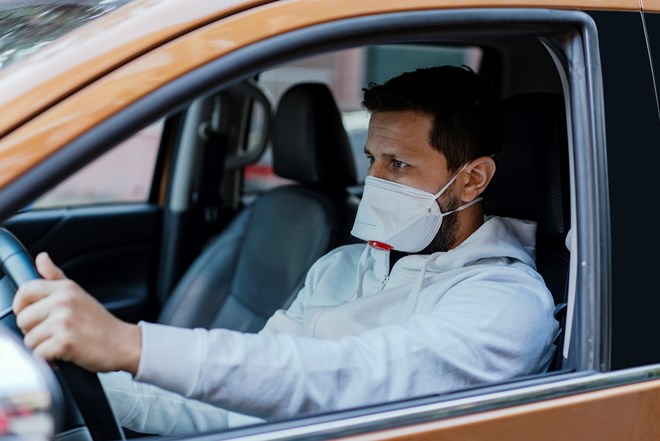











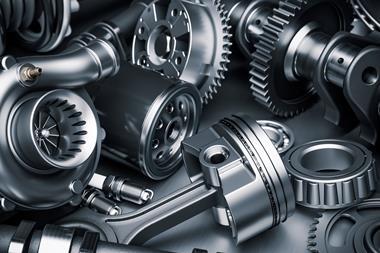


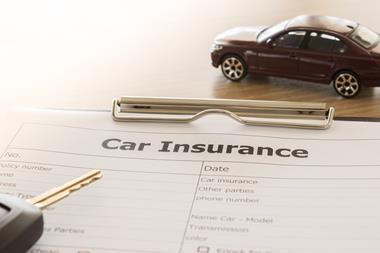
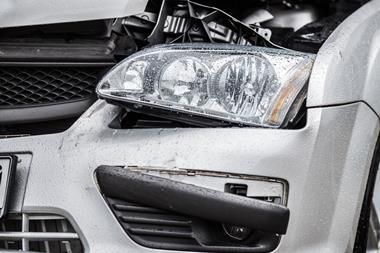









No comments yet